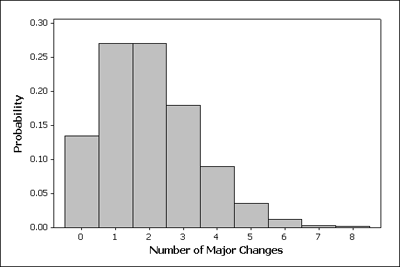Module 6: Probability and Probability Distributions
Introduction to Discrete Probability Distribution
Introduction to Discrete Probability Distribution
What you’ll learn to do: Use probability distributions for discrete and continuous random variables to estimate probabilities and identify unusual events.

In studying a probability experiment, it is often useful to work with quantitative values to represent outcomes. These quantitative values associated to outcomes are called random variables. In this section, we explore random variables that take on numeric values that can be listed. For example, number of books is a discrete random variable. On the other hand, hair color is not a random variable because hair color is not numeric. Also, any decimal between 0 and 1 is not discrete because we cannot list out all the decimals. In analyzing real life data, we will apply fundamental concepts about discrete probability distributions to estimate likelihoods and draw inferences.
- Concepts in Statistics. Provided by: Open Learning Initiative. Located at: http://oli.cmu.edu. License: CC BY: Attribution
